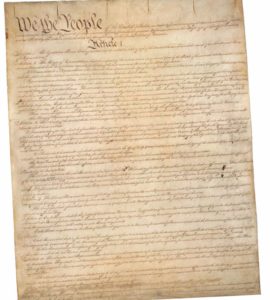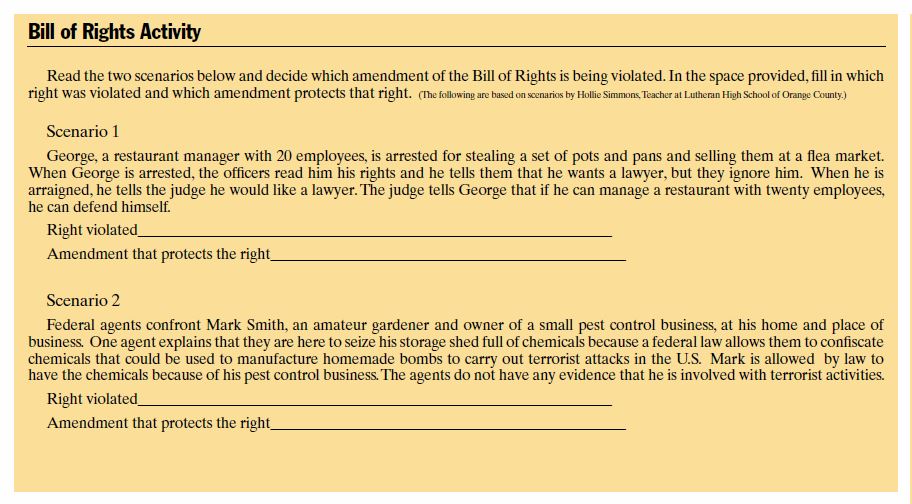Civics is the study of the rights and duties of citizens. The concept of citizenship comes from ancient Greece and Rome, where only adult males with property had the right to vote and to be part of the political process. In the United States, your gender or wealth does not prohibit you from participating as a citizen.

FEDERAL GOVERNMENT
Following the American Revolution, the leaders of the new nation came together to establish a national government. The first document set forth by the delegates was the Articles of Confederation, under which the central government was too weak, which caused many problems. Congress had no power to tax, to regulate trade, or to enforce its laws. The federal government lacked a national court system (judicial branch) or central leadership (executive branch), and changes to the articles required unanimous consent of the thirteen states. The delegates met and designed a new form of government for the United States, the Constitution.
The Constitution, which achieved ratification in October 1788, established our form of government as a republic. To protect the rights of citizens, amendments were added to the Constitution as the Bill of Rights. The Bill of Rights includes the first ten amendments, giving rights to the people and states, thus putting limits on the power of government. Some of these rights include freedom of religion, speech, press, and the right to assemble and petition. Since adoption of the Bill of Rights, many more amendments have been added. Because of this, some have said that the Constitution is a “living document.”




BRANCHES OF THE FEDERAL GOVERNMENT
The Founding Fathers feared the tyranny they had experienced under British rule. Therefore, they created a federal government consisting of three branches: the executive branch, legislative branch, and judicial branch. This form of government created a system of checks and balances so that one branch does not become more powerful than the other two. The executive branch is responsible for enforcing the laws of the United States. This branch consists of the president, vice president, and a Cabinet of the heads of the various departments of government. The legislative branch is responsible for lawmaking and consists of the House of Representatives and the Senate, which together form Congress. The judicial branch is the court system, made up of the U.S. Supreme Court and more than 1,000 other federal courts. This court hears and decides arguments about the meanings of laws, how they are applied, and whether they violate the Constitution. Florida Government (Benchmark: SS.7.C.3.13; SS.7.C.3.14)
- Why is it important to have freedom of the press?
- Why was the U.S. Constitution written?
Discuss the meaning of the word independence.
- Identify the weaknesses of the Articles of Confederation.
- What new, stronger document replaced the Articles of Confederation?
- What are the three branches of government? What are their responsibilities?
- Why was the Bill of Rights necessary?
- Why is a system of checks and balances necessary?
- What document contains the Bill of Rights?
- What are the freedoms protected by the First Amendment?
Choose two of the amendments in the Bill of Rights that you feel are most important. Write a paragraph explaining your choice.
- Find out the names of the people who hold these offices in Florida: governor, lieutenant governor, attorney general, and secretary of education.
- Find out who the state representative(s) and senator(s) are from your district. Write a letter to them about an issue that concerns you, or ask questions concerning govern-mental issues


